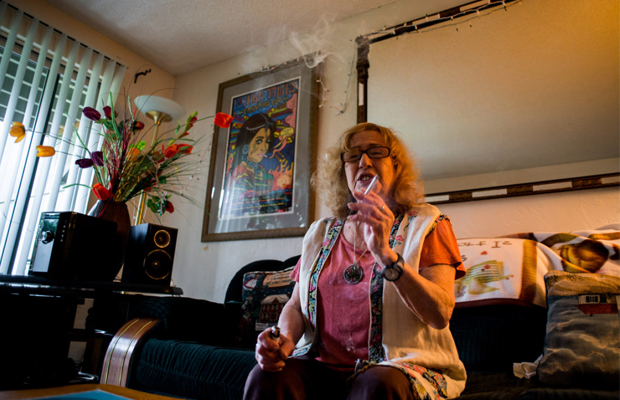Medical
Glaucoma Left Out of New York Medical Marijuana Bill
Elvy Musikka is one of only four recipients of federal medical marijuana for glaucoma.
On May 20, the Compassionate Care Act, New York’s latest bill to push for medical marijuana legalization, took a huge step forward when the Senate Health Committee voted to pass the bill.
Senator Diane Savino, the bill’s Democratic sponsor, considers this achievement to be an “enormous milestone,” however; last month she revised the bill to cater to Republicans within the state Senate. The most notable amendment was an alteration to the list of illnesses which medical marijuana could be prescribed, curiously leaving out glaucoma.
When explaining her reason for modifying the list of illnesses, Savino was vehement on not mimicking California’s reckless approach of prescribing medical marijuana to anyone without a “serious, debilitating, life-threatening condition.” She also noted that ophthalmologists have suggested that there are superior alternatives available that can treat glaucoma.
Glaucoma is an eye condition that is caused by high pressure within the eye, commonly known as intraocular pressure (IOP), and over time this causes optic nerve damage which leads to loss of vision. Glaucoma can be treated by lowering IOP levels, but treatment is necessary 24 hours a day.
Research conducted by the National Eye Institute has supported the notion that marijuana can lower a glaucoma patient’s IOP levels. The argument ophthalmologists point to is the amount of marijuana that would need to be smoked for it to have any effect.
Marijuana is said to lower the IOP levels for a short amount of time—roughly ranging between three to four hours. Due to the necessity to treat glaucoma around the clock, a patient would have to smoke six to eight times a day.
“This bill is really about a simple concept, which is to alleviate suffering,” said Sen. Brad Holyman.
Yet, excluding an illness which has been proven to be alleviated by marijuana seems odd. It is particularly puzzling when the federal government has even acknowledged marijuana’s effects.
Elvy Musikka is the most prominent glaucoma patient in the country, because she is one of four people to receive medical marijuana from the federal government. In 1988, as a last resort to obtain marijuana legally, she had to prove to the Food Drug Administration, DEA and the National Institute on Drug Abuse that marijuana was (and still is) the safest and most reliable treatment for her glaucoma.
Today, Musikka still continues to use the medical marijuana she receives, which is cultivated at the University of Mississippi.
The reason behind the exclusion of glaucoma from the list of treatable illnesses, while unusual, appears to be logical. Especially when taking into consideration that Savino and company are looking at the bigger picture. They’re fighting to have the Compassionate Care Act legalized by any means.
Still, there is hope that glaucoma can one day make the list if the bill is passed on the Senate floor.
The Daily News reports that the bill will have the ability to appoint an advisory panel to expand or reduce the list of illnesses based on scientific and medical recommendations.
The bill is now headed to the Finance Committee. If passed, it could be brought to a full Senate vote before the session ends next month.
Do you think glaucoma should remain part of the New York medical marijuana bill? Tell us in the comments.























